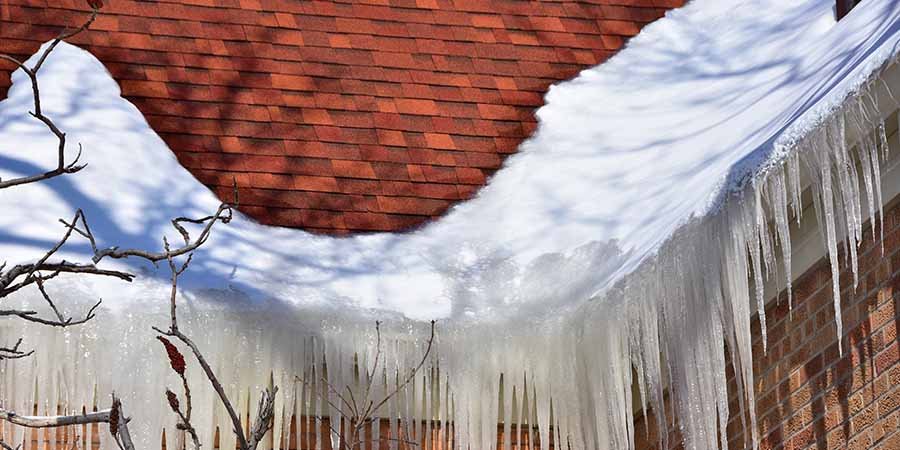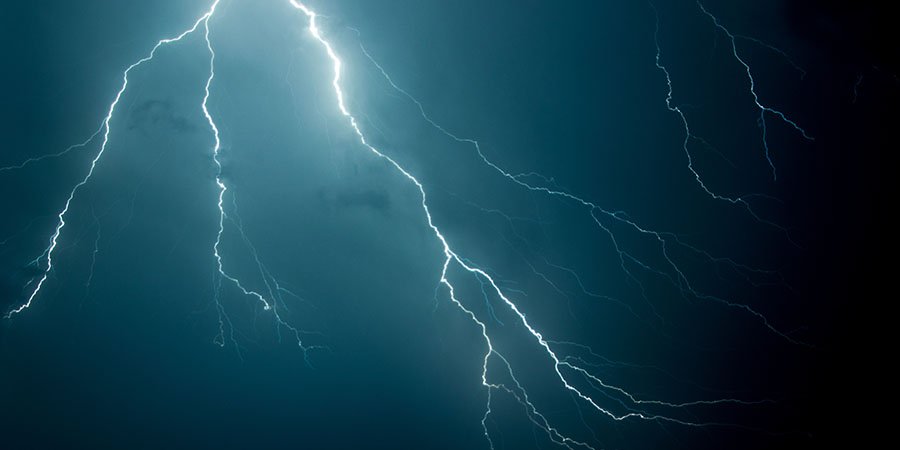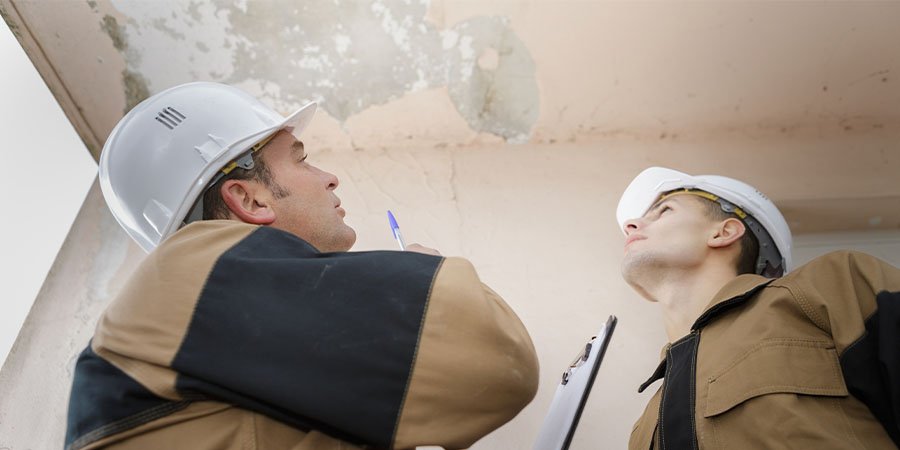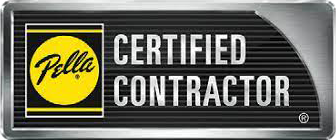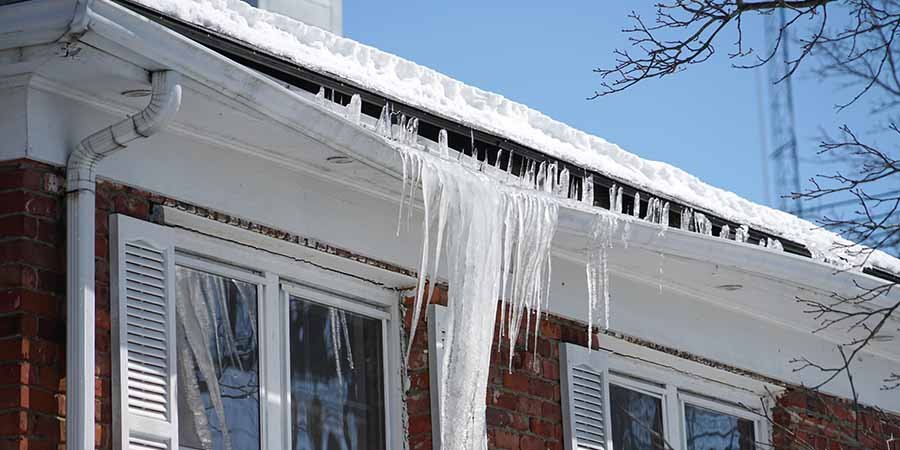
Being situated in the middle of the country, Omaha is also exposed to all the challenges that come with the winter time.
Different problems arise when disaster hits.
Oftentimes, you’re left wondering if your roof has storm damage?
One of the common problems is an obvious one, and can be very destructive: the creation of ice dams.
These ice barriers present an additional variety of challenges that include damage to roofing, water leakage, and mold cultivation on walls within buildings.
Therefore it is important in Omaha to know what causes the ice dams, their indicators and how to avoid them to protect people’s houses and commercial buildings from the same perils.
This article details some key strategies through which readers can keep their homes safe, control potential damages, and maintain winter serenity in Omaha.
What is an Ice Dam?
Ice dam is a term used about a barrier of ice formed on the overhangs or at the edge of a roof that generally has a slope.
It happens when rainwater and melted snow from the upper parts of the roof reach the cold eaves and drainpipes and refreeze there, forming a dam.
With time, snow tends to melt and flows off the roof towards the base of the ice dam.
This water may permeate through shingles, into the roof structure, and ultimately into the house.
Damage such as water leaks, ruined ceilings, walls, and insulation can result in mold development.
Also, the ice dam may place further pressure on the roof structure leading to problems with guttering, downspouts, and damage to the roof itself.
Ice dams commonly manifest themselves as a large mass of ice at the bottom ends of the roof and hanging icicles on the eaves.
Snow can melt differently depending on its extent or mass, insulation, and weather conditions among others.
Ice dam formations are usually associated with changing weather conditions.
As a result, if the melted snow refreezes when it is freezing temperature outside, it will form an ice layer over the roof’s edge.
As the cycles of melting and freezing take place again, this results in a gradual increase in size of the ice dam.
What Causes Ice Dams?
The causes of ice dams include variations in the weather pattern, lack of insulation and inappropriate ventilation leading to heat loss within the building.
That is why understanding the associated causes to this phenomenon is important towards successfully combating ice dams prevention.
1. Weather Conditions:
However, ice dams are often created during times when temperatures are fluctuating.
Snow in the upper portion of the roof melts when it is higher than freezing point, but still under freezing point at the bottom of the roof.
The snow melts on the roof and flows down towards the colder eaves or gutters.
It goes where it freezes again creating the ice barrier that hinders further melting water and gives rise to the ice dam.
2. Inadequate Insulation:
Lack of adequate attic or roof cavity insulation leads to warming up of interior air, which, in turn, rises and escapes along with the roof.
The escaping heat warms up the roof, melting the snow covering it.
The melt water runs over the roof at the warmer parts and freezes at the eaves.
This creates a layer that thickens with time until it becomes an ice dam.
3. Poor Ventilation:
Poor ventilation along with inefficient insulation aggravate the problem of heat loss.
Ice dam forms when hot and moist air gets trapped in the attic with no proper ventilation resulting in dampness.
The cold air flows properly making warm air melt off any snow that is found on the roof before it turns into icicles.
4. Heat Loss from Interior:
Air leaking through loose joints, improperly sealed HVAC systems, inadequately sealed ductwork, and poorly installed insulation on recess lighting also contribute to ice dam formation.
This heat goes upwards which in turn heats the under surface of the roof causing the snow to melt.
Like the other elements, this melted snow drips off at the eaves resulting in the formation of ice.
What to Do if You Have an Ice Dam?
Prompt actions on your part can limit the possible damages if they occur when you have an ice dam.
However, please ensure that you practice safety and seek help from experts where necessary.
The issue should be addressed, and prevention techniques applied to stop it from developing more ice dams to save the roof and house interiors as much as possible.
Identify the affected areas
Check you roof for the parts in which ice dams are built up.
Evaluate signs of roof damage and water leakage like stained or falling ceilings with apparent scars.
Safely remove snow from the roof
Carefully use a roof rake or other tool to remove snow below on the roof’s lowest part where the icicle is situated.
Be careful not to destroy the shingles and gutters while doing this.
Create channels for water drainage
Forming melted channels through the ice dam using a calcium chloride ice melt product is recommended by some.
However, before doing that, it’s important to consult a roofing professional to make sure the product will not damage your roof.
Never use rock salt or sodium chloride as they damage roof materials and vegetation.
Exercise caution when removing ice
When choosing to do this by hand however, be cautious.
Break the compacted ice using blunt-ended tools such as a rubber mallet or a wooden shovel so as not to damage the underlying materials.
One would avoid using sharp objects and hammers to reduce chances of damages on the roof.
Consult with professionals
In case, you choose DIY and the ice dam persists or you are not sure of what you are doing, then call a roofer or an ice dam removal service.
Contact Millard Roofing for professional evaluation, you’re in good hands.
We have the skills and expertise to effectively deal with ice dams and roof leaks.
Address underlying causes
At the same time, you must tackle the root cause of the ice dams if such problems are likely to reoccur in the future.
A professional Omaha roofer can help inspect attic insulation, roof ventilation, and gutters to help prevent future occurrences of ice dams.
How to Prevent Ice Dams?
Home owners are advised to put together a set of actions aimed at even roof temperature distribution as well as minimal heat loss, snow deposition control etc.
Importance of upgrading insulation on the attic/roof space cannot be overemphasized.
Insufficient insulation makes it difficult for heat to remain in living spaces.
This prevents heat from the room that could otherwise reach the snow and melt it.
Moreover, appropriate ventilation is crucial for controlling temperatures and keeping humidity at comfortable levels, hence good air circulation inside the attic or roof cavity is necessary.
Sealing air leaks within this space serves additionally to keep warm air from being emitted to the roof.
Ice dams are prevented by regular clearing of the roof snow, particularly around the eaves.
Professional consultation will offer suggestions on how to perform insulation improvements, update ventilation in each specific house.
Taking such preventative steps greatly minimizes opportunities for the ice dams to occur so as to avoid possible damages on their homes.

